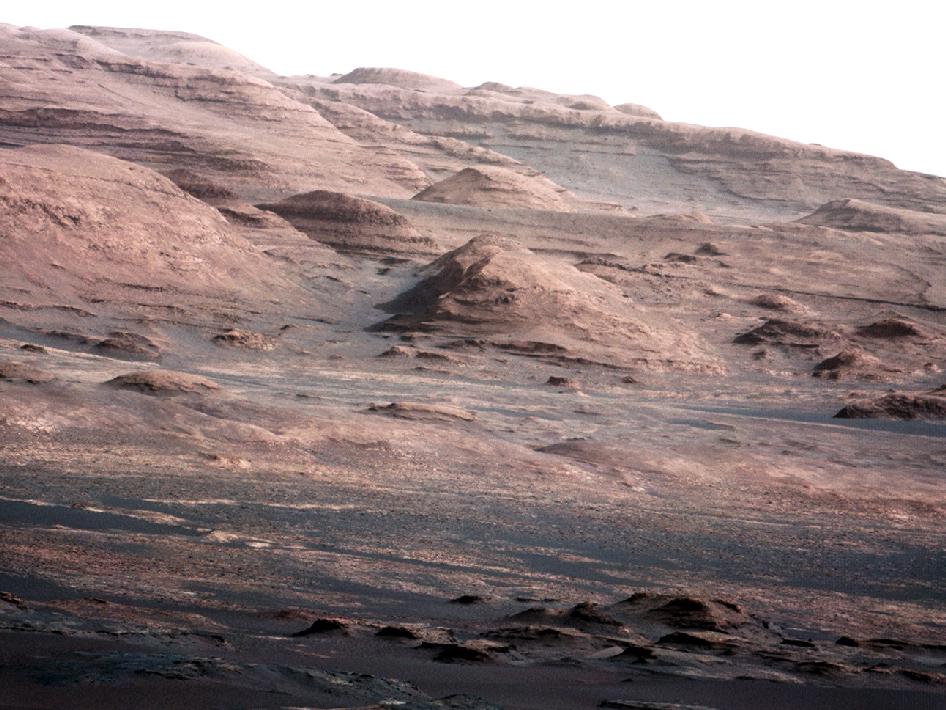NASA rover returns voice and telephoto views from Mars
August 28, 2012

Layers at the Base of Mount Sharp, the rover’s eventual science destination. This image is a portion of a larger image taken by Curiosity’s 100-millimeter Mast Camera on Aug. 23, 2012. Scientists enhanced the color to show the Martian scene under the lighting conditions we have on Earth, which helps in analyzing the terrain. The pointy mound in the center of the image, looming above the rover-sized rock, is about 1,000 feet (300 meters) across and 300 feet (100 meters) high. (Credit: NASA/JPL-Caltech/MSSS)
NASA’s Mars Curiosity has debuted the first recorded human voice that has traveled from Earth to another planet and back.
“The knowledge we hope to gain from our observation and analysis of Gale Crater will tell us much about the possibility of life on Mars as well as the past and future possibilities for our own planet. Curiosity will bring benefits to Earth and inspire a new generation of scientists and explorers, as it prepares the way for a human mission in the not too distant future,” Bolden said in the recorded message radioed to the rover on Mars and back to NASA’s Deep Space Network (DSN) on Earth.
The telephoto images beamed back to Earth show a scene of eroded knobs and gulches on a mountainside, with geological layering clearly exposed. The new views were taken by the 100-millimeter telephoto lens and the 34-milllimeter wide angle lens of the Mast Camera (Mastcam) instrument. Mastcam has photographed the lower slope of the nearby mountain called Mount Sharp.
“This is an area on Mount Sharp where Curiosity will go,” said Mastcam principal investigator Michael Malin, of Malin Space Science Systems in San Diego. “Those layers are our ultimate objective. The dark dune field is between us and those layers. In front of the dark sand you see redder sand, with a different composition suggested by its different color. The rocks in the foreground show diversity — some rounded, some angular, with different histories. This is a very rich geological site to look at and eventually to drive through.”
The full text of the administrator’s message, as well as a video clip and audio clip with his recorded voice, are available here.